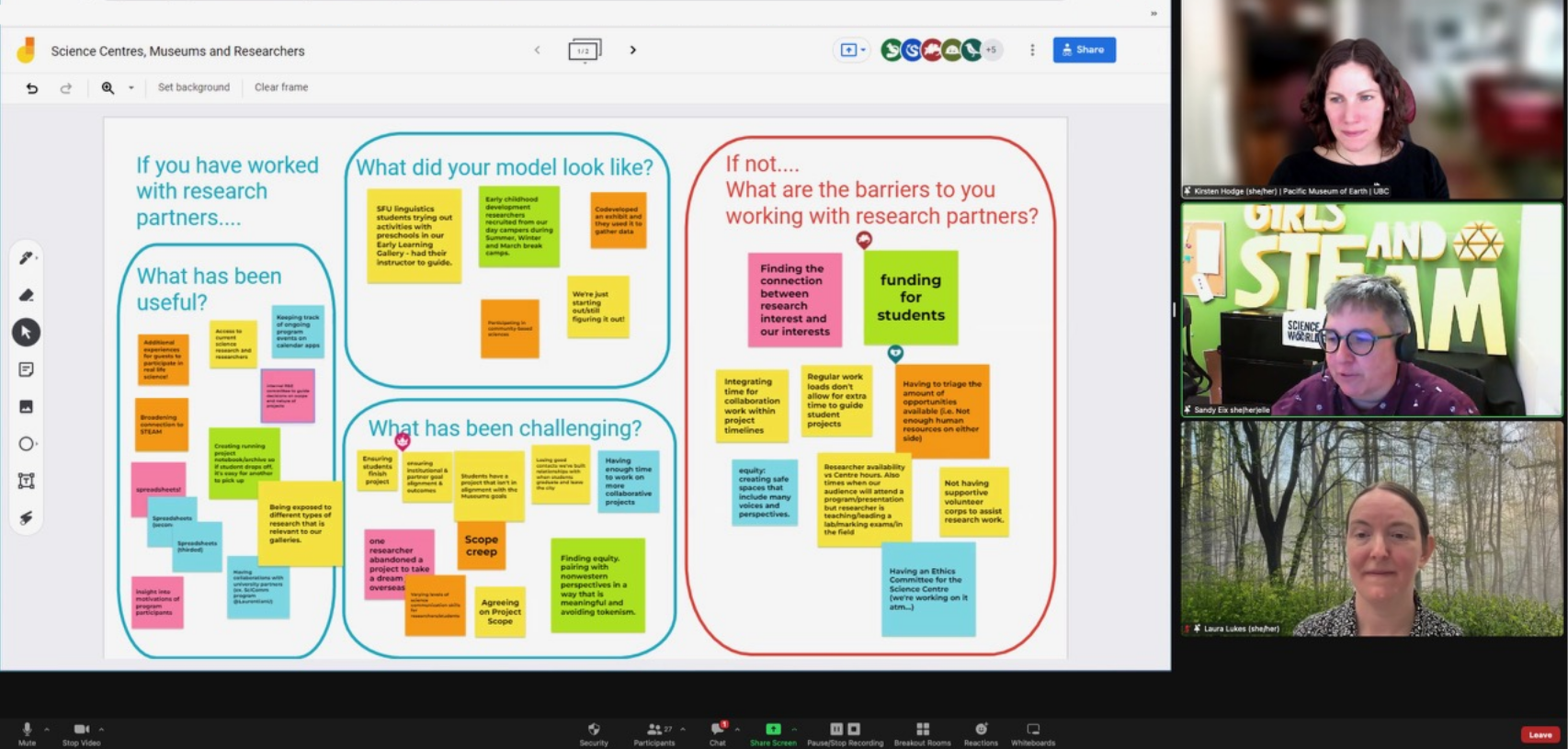Dr. Kirsten Hodge and Dr. Laura Lukes at the Canadian Association of Science Centres' Action to Impact conference

Kirsten Hodge (Director, Pacific Museum of Earth) & Laura Lukes (Assistant Professor, EOAS) teamed up with Sandy Eix, Director of STEAM learning at Science World to lead a session at the Canadian Association of Science Centres' Action to Impact conference that focused on Strategies for Expanding Science Centre/Museum Impact Evaluation Capacity Through Postsecondary Experiential Learning Partnerships. Session attendees explored how science centres, museums, and postsecondary faculty can develop mutually beneficial partnerships that increase a museum or science centre’s evaluation capacity and considered the advantages and challenges of such partnership models. Models currently underway at UBC between the Pacific Museum of Earth and Laura Lukes, a Discipline-Based Education Researcher, include: an independent undergraduate research project, a science communication course that includes a student-curated exhibit project, and an effort to develop a community-engaged research internship program at UBC.

Science centres and museums want to know who is (and perhaps more importantly, isn’t) visiting their spaces, how they felt about their visit, and whether they will visit again. Geoscience education researchers working in these settings seek to understand how people learn in such informal, self-initiated and self-directed environments, including how they develop attitudes about STEM and make choices about future engagement with STEM-related activities. Visitor activities in informal learning spaces are rooted in social interactions and perceptions of belonging in these environments. Evaluation and research therefore seek to understand who engages, why, and how their experience is in order to improve the visitor experience to be more accessible, inclusive, equitable, and just. Results from such work can then inform a museum or science centre’s ability to create new exhibits and programs that are more inclusive and accessible, broadening the museum or center’s audience.